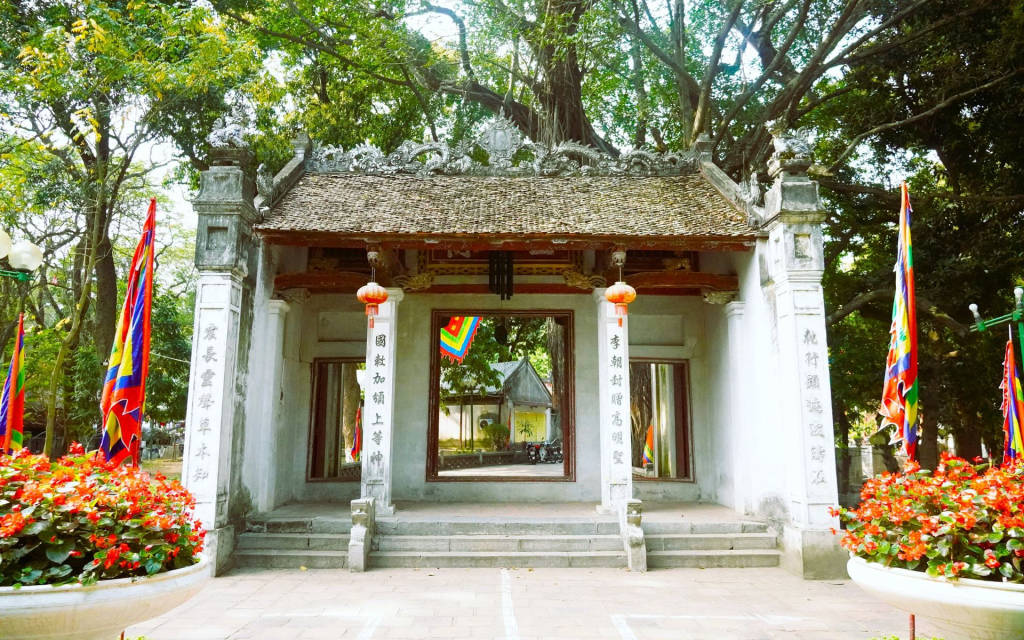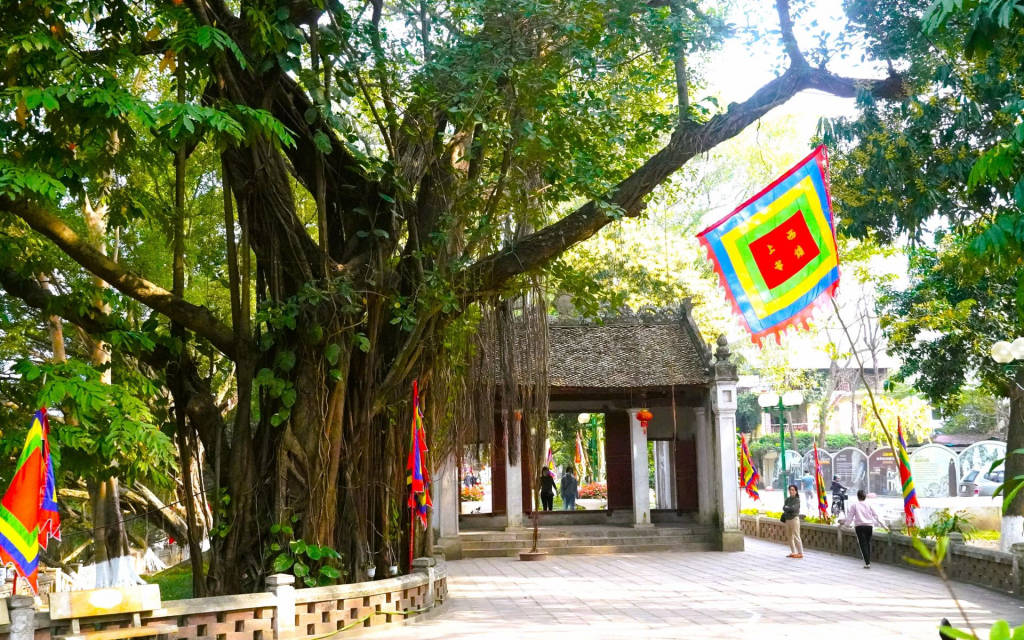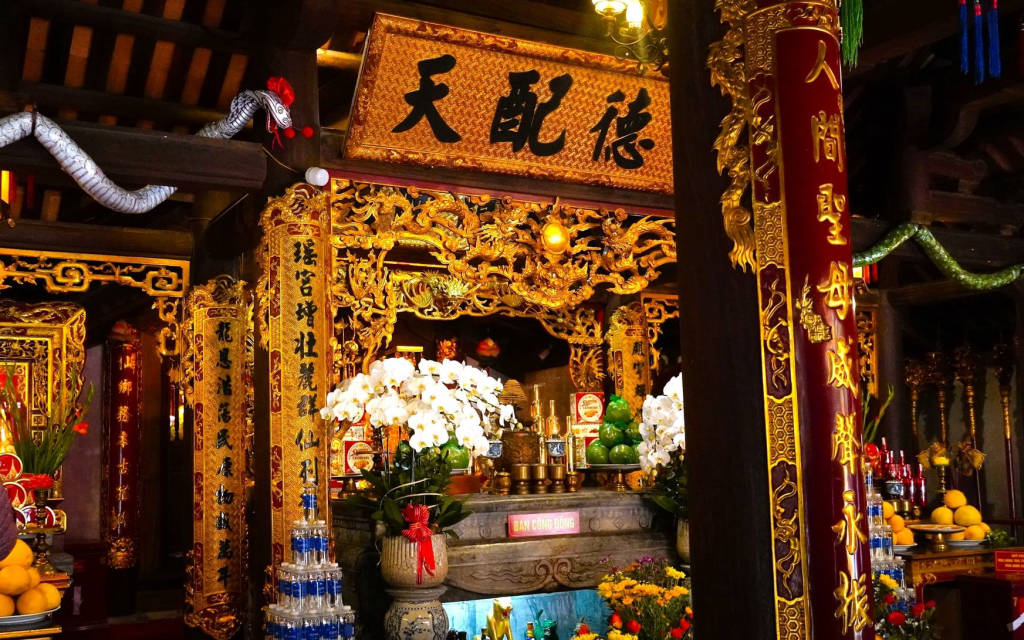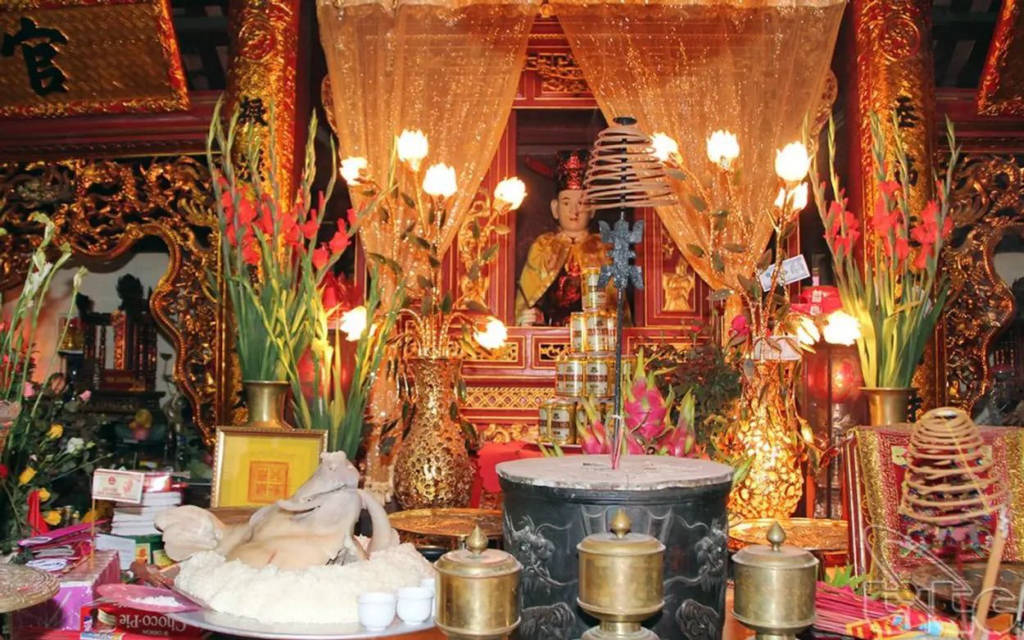Voi Phuc Temple – A Cultural and Historical Relic of Hanoi
Voi Phuc Temple – Western Guardian of Thang Long, also known as Tay Tran Tu, is one of Hanoi's unique historical relics. This sacred temple is part of the "Four Sacred Temples" system of the ancient Thang Long Citadel, offering protection to the entire capital. Voi Phuc Temple is located at 362 Kim Ma Street, Ngoc Khanh Ward, Ba Dinh District, near Thu Le Park and Doi Le Duan School, making it an unmissable destination for visitors to the capital.
1. History of Voi Phuc Temple
Voi Phuc Temple has a long history closely associated with important national events. Built during the reign of King Ly Thai Tong (1028-1054), the temple was established to worship Prince Linh Lang, the son of King Ly Thai Tong and the 9th concubine, Duong Thi Quang. According to legend, Linh Lang was the son of Long Quan – a mythical deity in folklore, known as Hoang Chau. Linh Lang made significant contributions during the resistance against the Song invaders and heroically sacrificed himself on the Cau River defense line in 1076.
After the prince's death, the people of Thu Le built a temple to honor this national hero. The king conferred the title "Linh Lang Dai Vuong Thuong Dang Phuc Than" upon Linh Lang, making him a guardian deity. During various wars, the deity Linh Lang supported multiple dynasties, especially the Tran Dynasty during the resistance against the Mongol invaders and the Le Dynasty during the nation's renaissance. Thus, Voi Phuc Temple is also known as "Tay Tran" – the western guardian of the ancient Thang Long Citadel.
2. Architecture of Voi Phuc Temple
Voi Phuc Temple features traditional Vietnamese architecture in the shape of the Chinese character "工" (gong), with multiple sections arranged logically. The temple is built with traditional Vietnamese architectural elements, including shoe-shaped roof tiles, creating a solemn worship space.
Temple Gate:
In front of the temple gate are kneeling elephant statues, giving the temple its name "Voi Phuc" (Kneeling Elephants). Additionally, stone tablets and intricate carvings on either side of the gate symbolize the sanctity and protection of the deity Linh Lang. The temple's frontage faces Thu Le Lake, creating a cool and serene environment suitable for worship and cultural activities.
Path to the Temple:
The path to the temple features three routes, with the central one having 12 wide stone steps for carrying palanquins during festivals. In front of the temple is a square well, symbolizing water convergence and blessings, praying for favorable weather and a prosperous life. The stone cloud dragons and the relief carvings on the temple's main door are exquisite art pieces from the 19th century.
Temple Interior:
Voi Phuc Temple has a five-compartment front hall with bracket structures, decorated with wooden panels, couplets, dragon thrones, and ceremonial wooden screens. In the central compartment of the rear hall is the statue of Linh Lang Dai Vuong with a delicate and solemn face. In front of the deity statue is a large stone with a depression, where, according to legend, the deity once laid his head.
3. Voi Phuc Temple Festival
The Voi Phuc Temple Festival takes place on the 9th and 10th days of the second lunar month each year, making it one of Hanoi's major festivals. The festival lasts from 3 to 10 days, depending on community contributions. The festival attracts not only locals but also tourists from all over. The main activities include processions, deity worship ceremonies, and various traditional folk games.
The Voi Phuc Temple Festival is an opportunity for the community to remember Prince Linh Lang's feats and express gratitude to the deity who protected the nation during difficult times. It is also an occasion for locals and visitors to participate in traditional cultural activities, helping preserve the national cultural identity.
4. Voi Phuc Temple in Historical Context
Voi Phuc Temple has long been more than a place of deity worship; it is a symbol of protection and strength. It testifies to the patriotic spirit and honors national heroes in Vietnam's history. Despite undergoing many historical upheavals, from being destroyed during the French colonial period to recent renovations, Voi Phuc Temple has retained its historical and cultural value. The temple was recognized as a cultural historical relic by the Ministry of Culture on April 28, 1962. Visiting Voi Phuc Temple today, we can admire an ancient architectural work and feel the respect for national heroes who sacrificed for the country's independence and freedom.
5. Conclusion
Dear visitors, those are the basic features of Voi Phuc Temple, a temple rich in Hanoi's historical and cultural significance. I hope this guide helps you understand more about this sacred temple and appreciate the tranquil, peaceful beauty of this long-standing cultural site in the heart of the capital.
Admission Fee: Free
 Register
RegisterSign in Travel Agent
Sign in Supplier
Sign in Affiliate
Sign in Guru









 362 phố Kim Mã, Tổ 1, P. Ngọc Khánh, Q. Ba Đình, Tp. Hà Nội, Việt Nam
362 phố Kim Mã, Tổ 1, P. Ngọc Khánh, Q. Ba Đình, Tp. Hà Nội, Việt Nam